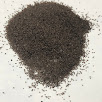What are pure substances?
Feels like a definition is coming… Just saying…
Pure substances are composed of only one type of atom or molecule.
Seems like knowing what atoms and molecule are would be helpful.
Any portion of a pure substance has the same physical and chemical properties as any other portion. Seems like knowing what physical and chemical properties are would be helpful.
Things like size and mass/weight would change, depending on how big each portion was, but otherwise, every portion would have the same properties. They would have the same look. They would react to magnets the same. Stuff like that.
So, all samples of any pure substance:
- share the same properties
(To be more exact while introducing more confusion, they share the same intensive properties, but not the same extensive properties.) - have a uniform composition—any part of the sample is composed exactly like any other part of the sample.
What that means is, for example, if you were to start cutting a piece of aluminum foil in half, each half you cut off would have the exact same physical and chemical properties as the other.
 |
| NaCl and Iron mixed on filter paper. |
To simplify that, every piece of foil would look and behave exactly like every other piece of foil BECAUSE aluminum is a pure substance made up of only one type of atom.
________
In contrast, if you were to mix some salt and some iron shavings together on a filter paper, you could, using a tool of some sort (and maybe a magnifying glass) separate out one grain of salt and one shaving of iron.
Close up of mixture. This is because a mixture of salt and iron shavings would not be made up of one type of atom or molecule. (More Info)Using a magnet would readily pull the iron out of the mixture. Because it is NOT a pure substance.
________
So, getting back to pure substances…
No matter how small you cut, a piece of aluminum foil is still a piece of aluminum foil. Unless you have some strange foil that has a coating or something weird.
The same goes for water. You can keep dividing water over and over, and each division you end up with water.
 |
| Water drops on lab table. |
Now if you divide that in half you have 512 molecules of water. Divide again, you are down to 256. Again, you are down to 128. Then to 64, then to 32, then to 16, 8, 4, and finally down to 2 molecules. Divide again, and you have 1 molecule. OF WATER. Water that does not contain any impurities is made up of only one type of molecule.
Every division of water would act just like every other division of water because water is a pure substance made up of only one type of molecule.
And… since pure substances are composed of only one type of atom or molecule we should probably go on to say that there are two types of pure substances:

No comments:
Post a Comment